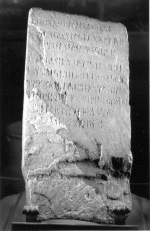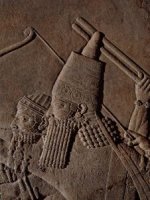rangler
Bronze Member
- Jul 12, 2004
- 1,320
- 201
- Detector(s) used
- for solutions to the jesuit code -email pics to: [email protected]
;[email protected] locations needed! oro bro!
- Primary Interest:
- Other
Greetings Fellow Argonauts, Treasure Hunters...
It just will not go away...like that persistent mosquito, that keeps buzzing your ear..
it nags at you ... pesters you , until you have had enough and take a swat at it..
hoping to squish it like the pest that it is... well the theme of the Ancient ones is like
that. All of us serious Treasure Hunters run in to their marks and monuments, when
we spend enough time in the field. Older than Spanish and the Jesuits for sure, way older.
We are going to take a swat at that pesky presence....
~~~
The amount of wind blown erosion, the layers of lichens and desert varnish, speaks to
eons of time standing there, in place as their creators cut, hammered and chiseled the
marks and symbols in various configurations.. chisel marks long polished off by the winds
of time, they beckon us, call us, confound us, who are these people, and just what the
h*ll are they trying to tell us? How did they get here, How did they move those giant
boulders into place, What for and When?
What type of code are these Ancients using, where did it come from,What does it mean?
Who sent them?, and Why are they here?, Where did the go? What did they find here?
Did they then bury that stuff? Did they take it with them? Where are the mines that they left?
What century did they come here. Why did they disappear? Did they go back their mother land?
The questions roll of the brain quite easily, the answers not so much! But in framing the question
we might know more about the enigma, and spark a debate to help learn more about this
very large gray area of our history here in the United States of America.
What do we know and how do we know it? We only have hints and suggestions, as far as I
believe. We can take the Bible for instance and consider what I and others, mainly Roger
Snow and others have stated, i.e. that this is the Land of Ophir[a] from the days of King Solomon
well, I for one think this is the best guess for what is 'written' down.
[a] in December, 1989, it was reported that an American explorer in Peru's highland jungle had found evidence that indicated King Salomon's legendary gold mines may have been in that region. King Solomon is figure described in the Middle Eastern scriptures as a wise ruler of an empire centered on the united Kingdom of Israel. He was born in Jerusalem about 1000BC and reigned over Israel form about 970 to 928BC. He is also considered a p prophet by Islam. The explorer, Gene Savoy, declared that he had found three stone tablets containing the first writing found from the ancient civilizations of the Andes. The inscriptions, he reported, are similar to Phoenician and Hebrew hieroglyphs!

There are statements that say that the amounts of gold brought back from the Land of Ophir
are about the same as what it would take to sail to the new world, mine, smelt, and transport
the gold back to ships and sail back to the Old World. Ok fair enough, but is that enough to
'prove' that it happened..for the prudent man , I think not..for the skeptic their is never enough
proof, even if a ton of golden proof was lowered on their chest..they still would doubt that the
proof is real such is the closed mind of the naysayer...so we are not to "prove" beyond a shadow
hehe of doubt..only to OPEN the discussion.
The reign of Solomon was enveloping the entire world. Israel's close neighbor, Phonecia, and their expert navigators were working with the servants of Solomon from both countries ports. The ships of Tarshish sailed extremely long voyages to bring back all kinds of raw materials and items (copper & other ores, flora & fauna samples, "exotic" animals, etc.). ( Reference note:2Ch 9:21 For the king's ships went to Tarshish with the servants of Huram: every three years once came the ships of Tarshish bringing gold, and silver, ivory, and apes, and peacocks.) It would help explain the need of three year journeys if the seamen had to cross the ocean to come to these far off isles in America. The fact that the trading ships of Phoenicia did have docks in ancient America can be proved from inscriptions they left behind. ( See Dr. Barry Fell's book America B.C. and also reading Steven M. Collins The "Lost" Ten Tribes of Israel...Found! is highly recommended) The Los Lunas site is located along the Puerco River which is tributary of the Rio Grande River. The Rio Grande is definitely in the Atlantic drainage. It would have been entirely possible for the Hebrew-Phonecian sailors to access the area of the stone.
I submit that the instances of the Phoenicians being in North American in Roman times as the first
salvo fired across the bow of the unbeliever. Reports in the National Geographic, I think it was have
shown that the copper used in the tools and instruments of the Roman era, a very valuable commodity then and been tested and proven to have come from the copper ore found to this day in Upper Michigan! , We are talking AD here folks...early AD.. Now these traders and sailors were the sea faring
entrepreneurs of the day.. they sailed beyond the Pillars of Hercules , across the Atlantic and ends of the Earth as it was known, to the New World, and mounted expeditions to find and exploit valuable ores and commodities that could be trades for huge riches back in the old world.[1][4]
[c]Did they reach the North Atlantic?
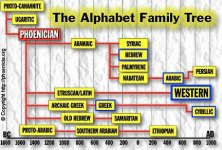
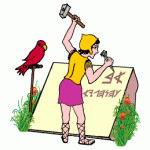
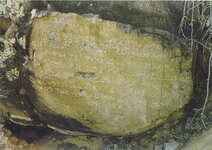
There are legends of caves along the Colorado of Egyptian or Mid Eastern sources, myths of the Navajo
being 'born' and leaving the middle earth along this same area. There are those who say that the Jesuits and the Spanish only FOUND the monuments that were all ready here, decoded them, followed them found the precious ores and exploited them for the various powers that be,. and kept the whole thing super secret because it was illegal for them to have anything to do with such activities.
Be that as it may, whatever the Spanish did here, they were not the first, by any means, whether they invented the Code or merely broke the code, we don't know to this day..it is tantalizing to think that the Jesuits
only broke the code, because that gives us hope that we also can do the same thing.[2a]
The Ancients Ones who walking this continent , roamed it at will, terraformed it in places if you will, moved parts of mountains, and boulders, and dug deep pits in to mountains, learned the secrets of mining and of smelting, and transports huge tonnage of all types of metals, where did this knowledge come from, ??
from the days of Alchemy, where early professors of the Arcane worked tirelessly to transform lead into gold? Or was that merely the cover story, metaphor for conversion of Man to Christian Enlightenment, because of the Spanish Inquisition could have you burned alive if they knew of such endeavors?
Again more questions that answers, like most age old mysteries - but here on this forum we shall try
to shine some light on the subject and see what we can uncover, with the collective knowledge that we have learned first hand, from all our trudging in the wild outback of America.[3]
Oh lets not forget Rogers insightful comment of the construction of the very word Ophir ! Where the word Phi is inserted as a tantalizing clue in to the coded reference to higher knowledge and the aspect of Golden Mathematics!! [3a]
Please join us here, pose your questions, offer solutions, and facts,photographs, artifacts and theories, are all welcome here, lets just be light on the nay saying and the negative, because that only diverts our
energies to ground, where the idea is dissipated and not elevated - if you get my drift/
auferiously
rangler
"knowledge is better than money, understanding better than mutual funds"...paraphrasing of course
~~~
[1]http://www.jstor.org/pss/3209381
[2] http://www.google.com/search?hl=en&...hoenician+writing+on+stone+in+america&spell=1
[2a] www.crystalinks.com/gc_egyptconnection.html -
A stone in a a dry creek bed in New Mexico discovered by the early settlers in the region, is one of the most amazing archaeological discoveries in the Western Hemisphere. It contains engraved on its flank the entire Ten commandants, written in ancient Phoenician script! Hebrew scholars, such as cyrus Gordon of Brandies University near Boston, , have vouched for its authenticity./ Who put it there? Who wrote the incredible inscription of the Ten Commandments?
[3] http://www.newworldencyclopedia.org/entry/Phoenicia
The possibility that the Phoenician's may have made a pre-Columban voyage or voyages to the Americas has been explored by several scholars from as early as T. C Johnston's T. C 1892 book, Did the Phoenicians Discover America? Work on Phoenician coins carried out by Mark McMenamin suggests that gold coins minted in Carthage between 350 and 320 B.C.E. may depict a map of the Americas [4]. Some have speculated that the Phoenicians may even have colonized the Americas. Thor Heyerdahl's Ra I and Ra I expeditions were designed to prove that Egyptian ships could have crossed the Atlantic but could also be applied to the Phoenicians, who were renowned for their seamanship and who were often employed as sailors and explorers by the Egyptians. Some first century peruvian pottery resembles Phoenician pottery. Wreckage of Phoenician ships and an inscription on a rock in Brazil suggests phoenicians had visited there.
[3a]http://goldennumber.net/goldsect.htm
[4]Phoenicians in the Bible
In the Old Testament there is no reference to the Greek term Phoenicia; instead, the inhabitants of the coastal are identified by their city of origin, most often as Sidonians (Gen. x. 15; Judges iii. 3; x. 6, xviii. 7; I Kings v. 20, xvi. 31). Early relations between Israelites and the Canaanites were cordial: Hiram of Tyre, a Phoenician by modern assessment, furnished architects, workmen and cedar timbers for the temple of his ally Solomon at Jerusalem. The Phoenician language was largely mutually intelligible with the Hebrew language, and cultural similarities between the two peoples were significant, leading to the worship of Phoenician gods like Baal by some Jews during the time of Prophet Elijah.
Of course there is another Hiram (also spelled Huran) associated with the building of the temple.
" The son of a woman of the daughters of Dan, and his father [was] a man of Tyre, skilful to work in gold, and in silver, in brass, in iron, in stone, and in timber, in purple, in blue, and in fine linen, and in crimson; also to grave any manner of graving, and to find out every device which shall be put to him…" (2 Ch 2:14)
This is the architect of the Temple, Hiram Abiff of Masonic lore. They are vastly famous for their purple dye.
Later, reforming prophets railed against the practice of drawing royal wives from among foreigners: Elijah execrated Jezebel, the princess from Tyre who became a consort of King Ahab and introduced the worship of her gods.
In the Bible, King Hiram I of Tyre is mentioned as co-operating with Solomon in mounting an expedition on the Red Sea and on building the temple. The Temple of Solomon is considered to be built according to Phoenician design, and its description is considered the best description of what a Phoenician temple looked like. Phoenicians from Syria were also called "Syrophenicians."
Long after Phoenician culture had flourished, or Phoenicia had existed as any political entity, Hellenized natives of the region where Canaanites still lived were referred to as "Syro-Phoenician," as in the Gospel of Mark 7:26: "The woman was a Greek, a Syrophoenician by birth…"
The word Bible itself ultimately derives (through Latin and Greek) from Byblos, the Phoenician city. Because of its papyri, Byblos was also the source of the Greek word for book and, hence, of the name of the Bible.**
**Please note references here to the Bible and contents are ONLY for the purposes to explain the existence of Ancient
people visiting the Americans in "biblical times" can not, and must not be construed out side that context.These
are the urls and annotations and footnotes to show source materials to the academically oriented and are only offered in that context.
to do otherwise is to not see the secular nature that biblical things take , when described in terms of clues and strictly as
an historical document, quoted freely under the First Amendment Rights of the Constitution of the United States.
Further more to do is to ignore the secular context in which these various quotations are offered. NO conversion,
evangelism or religiosity are inferred or implied. I rest my case.
It just will not go away...like that persistent mosquito, that keeps buzzing your ear..
it nags at you ... pesters you , until you have had enough and take a swat at it..
hoping to squish it like the pest that it is... well the theme of the Ancient ones is like
that. All of us serious Treasure Hunters run in to their marks and monuments, when
we spend enough time in the field. Older than Spanish and the Jesuits for sure, way older.
We are going to take a swat at that pesky presence....
~~~
The amount of wind blown erosion, the layers of lichens and desert varnish, speaks to
eons of time standing there, in place as their creators cut, hammered and chiseled the
marks and symbols in various configurations.. chisel marks long polished off by the winds
of time, they beckon us, call us, confound us, who are these people, and just what the
h*ll are they trying to tell us? How did they get here, How did they move those giant
boulders into place, What for and When?
What type of code are these Ancients using, where did it come from,What does it mean?
Who sent them?, and Why are they here?, Where did the go? What did they find here?
Did they then bury that stuff? Did they take it with them? Where are the mines that they left?
What century did they come here. Why did they disappear? Did they go back their mother land?
The questions roll of the brain quite easily, the answers not so much! But in framing the question
we might know more about the enigma, and spark a debate to help learn more about this
very large gray area of our history here in the United States of America.
What do we know and how do we know it? We only have hints and suggestions, as far as I
believe. We can take the Bible for instance and consider what I and others, mainly Roger
Snow and others have stated, i.e. that this is the Land of Ophir[a] from the days of King Solomon
well, I for one think this is the best guess for what is 'written' down.
[a] in December, 1989, it was reported that an American explorer in Peru's highland jungle had found evidence that indicated King Salomon's legendary gold mines may have been in that region. King Solomon is figure described in the Middle Eastern scriptures as a wise ruler of an empire centered on the united Kingdom of Israel. He was born in Jerusalem about 1000BC and reigned over Israel form about 970 to 928BC. He is also considered a p prophet by Islam. The explorer, Gene Savoy, declared that he had found three stone tablets containing the first writing found from the ancient civilizations of the Andes. The inscriptions, he reported, are similar to Phoenician and Hebrew hieroglyphs!

There are statements that say that the amounts of gold brought back from the Land of Ophir
are about the same as what it would take to sail to the new world, mine, smelt, and transport
the gold back to ships and sail back to the Old World. Ok fair enough, but is that enough to
'prove' that it happened..for the prudent man , I think not..for the skeptic their is never enough
proof, even if a ton of golden proof was lowered on their chest..they still would doubt that the
proof is real such is the closed mind of the naysayer...so we are not to "prove" beyond a shadow
hehe of doubt..only to OPEN the discussion.
The reign of Solomon was enveloping the entire world. Israel's close neighbor, Phonecia, and their expert navigators were working with the servants of Solomon from both countries ports. The ships of Tarshish sailed extremely long voyages to bring back all kinds of raw materials and items (copper & other ores, flora & fauna samples, "exotic" animals, etc.). ( Reference note:2Ch 9:21 For the king's ships went to Tarshish with the servants of Huram: every three years once came the ships of Tarshish bringing gold, and silver, ivory, and apes, and peacocks.) It would help explain the need of three year journeys if the seamen had to cross the ocean to come to these far off isles in America. The fact that the trading ships of Phoenicia did have docks in ancient America can be proved from inscriptions they left behind. ( See Dr. Barry Fell's book America B.C. and also reading Steven M. Collins The "Lost" Ten Tribes of Israel...Found! is highly recommended) The Los Lunas site is located along the Puerco River which is tributary of the Rio Grande River. The Rio Grande is definitely in the Atlantic drainage. It would have been entirely possible for the Hebrew-Phonecian sailors to access the area of the stone.
I submit that the instances of the Phoenicians being in North American in Roman times as the first
salvo fired across the bow of the unbeliever. Reports in the National Geographic, I think it was have
shown that the copper used in the tools and instruments of the Roman era, a very valuable commodity then and been tested and proven to have come from the copper ore found to this day in Upper Michigan! , We are talking AD here folks...early AD.. Now these traders and sailors were the sea faring
entrepreneurs of the day.. they sailed beyond the Pillars of Hercules , across the Atlantic and ends of the Earth as it was known, to the New World, and mounted expeditions to find and exploit valuable ores and commodities that could be trades for huge riches back in the old world.[1][4]
[c]Did they reach the North Atlantic?

From elsewhere they got many other materials, perhaps the most important being tin and silver from Spain and possibly even from Cornwall on Great Britain, which together with copper (from Cyprus) was used to make bronze. Trade routes from Asia converged on the Phoenician coast as well, enabling the Phoenicians to govern trade between Mesopotamia on the one side, and Egypt and Arabia on the other.
The fact that they found the copper ore deposits in Michigan, shows the level of penetration that they were able to achieve, this supposes that other expeditions in to the interior and the American Southwest was easy to conceive. We have evidence of Phoenician writing on stone found here, The Los Lunas site http://www.truthontheweb.org/comstone.htm
we have evidence of Archaic Hebrew, the Ten Commandments writing in stone, found the the Southwest.[2]There are legends of caves along the Colorado of Egyptian or Mid Eastern sources, myths of the Navajo
being 'born' and leaving the middle earth along this same area. There are those who say that the Jesuits and the Spanish only FOUND the monuments that were all ready here, decoded them, followed them found the precious ores and exploited them for the various powers that be,. and kept the whole thing super secret because it was illegal for them to have anything to do with such activities.
Be that as it may, whatever the Spanish did here, they were not the first, by any means, whether they invented the Code or merely broke the code, we don't know to this day..it is tantalizing to think that the Jesuits
only broke the code, because that gives us hope that we also can do the same thing.[2a]
The Ancients Ones who walking this continent , roamed it at will, terraformed it in places if you will, moved parts of mountains, and boulders, and dug deep pits in to mountains, learned the secrets of mining and of smelting, and transports huge tonnage of all types of metals, where did this knowledge come from, ??
from the days of Alchemy, where early professors of the Arcane worked tirelessly to transform lead into gold? Or was that merely the cover story, metaphor for conversion of Man to Christian Enlightenment, because of the Spanish Inquisition could have you burned alive if they knew of such endeavors?
Again more questions that answers, like most age old mysteries - but here on this forum we shall try
to shine some light on the subject and see what we can uncover, with the collective knowledge that we have learned first hand, from all our trudging in the wild outback of America.[3]
Oh lets not forget Rogers insightful comment of the construction of the very word Ophir ! Where the word Phi is inserted as a tantalizing clue in to the coded reference to higher knowledge and the aspect of Golden Mathematics!! [3a]
Please join us here, pose your questions, offer solutions, and facts,photographs, artifacts and theories, are all welcome here, lets just be light on the nay saying and the negative, because that only diverts our
energies to ground, where the idea is dissipated and not elevated - if you get my drift/
auferiously
rangler
"knowledge is better than money, understanding better than mutual funds"...paraphrasing of course
~~~
[1]http://www.jstor.org/pss/3209381
[2] http://www.google.com/search?hl=en&...hoenician+writing+on+stone+in+america&spell=1
[2a] www.crystalinks.com/gc_egyptconnection.html -
A stone in a a dry creek bed in New Mexico discovered by the early settlers in the region, is one of the most amazing archaeological discoveries in the Western Hemisphere. It contains engraved on its flank the entire Ten commandants, written in ancient Phoenician script! Hebrew scholars, such as cyrus Gordon of Brandies University near Boston, , have vouched for its authenticity./ Who put it there? Who wrote the incredible inscription of the Ten Commandments?
[3] http://www.newworldencyclopedia.org/entry/Phoenicia
The possibility that the Phoenician's may have made a pre-Columban voyage or voyages to the Americas has been explored by several scholars from as early as T. C Johnston's T. C 1892 book, Did the Phoenicians Discover America? Work on Phoenician coins carried out by Mark McMenamin suggests that gold coins minted in Carthage between 350 and 320 B.C.E. may depict a map of the Americas [4]. Some have speculated that the Phoenicians may even have colonized the Americas. Thor Heyerdahl's Ra I and Ra I expeditions were designed to prove that Egyptian ships could have crossed the Atlantic but could also be applied to the Phoenicians, who were renowned for their seamanship and who were often employed as sailors and explorers by the Egyptians. Some first century peruvian pottery resembles Phoenician pottery. Wreckage of Phoenician ships and an inscription on a rock in Brazil suggests phoenicians had visited there.
[3a]http://goldennumber.net/goldsect.htm
[4]Phoenicians in the Bible
In the Old Testament there is no reference to the Greek term Phoenicia; instead, the inhabitants of the coastal are identified by their city of origin, most often as Sidonians (Gen. x. 15; Judges iii. 3; x. 6, xviii. 7; I Kings v. 20, xvi. 31). Early relations between Israelites and the Canaanites were cordial: Hiram of Tyre, a Phoenician by modern assessment, furnished architects, workmen and cedar timbers for the temple of his ally Solomon at Jerusalem. The Phoenician language was largely mutually intelligible with the Hebrew language, and cultural similarities between the two peoples were significant, leading to the worship of Phoenician gods like Baal by some Jews during the time of Prophet Elijah.
Of course there is another Hiram (also spelled Huran) associated with the building of the temple.
" The son of a woman of the daughters of Dan, and his father [was] a man of Tyre, skilful to work in gold, and in silver, in brass, in iron, in stone, and in timber, in purple, in blue, and in fine linen, and in crimson; also to grave any manner of graving, and to find out every device which shall be put to him…" (2 Ch 2:14)
This is the architect of the Temple, Hiram Abiff of Masonic lore. They are vastly famous for their purple dye.
Later, reforming prophets railed against the practice of drawing royal wives from among foreigners: Elijah execrated Jezebel, the princess from Tyre who became a consort of King Ahab and introduced the worship of her gods.
In the Bible, King Hiram I of Tyre is mentioned as co-operating with Solomon in mounting an expedition on the Red Sea and on building the temple. The Temple of Solomon is considered to be built according to Phoenician design, and its description is considered the best description of what a Phoenician temple looked like. Phoenicians from Syria were also called "Syrophenicians."
Long after Phoenician culture had flourished, or Phoenicia had existed as any political entity, Hellenized natives of the region where Canaanites still lived were referred to as "Syro-Phoenician," as in the Gospel of Mark 7:26: "The woman was a Greek, a Syrophoenician by birth…"
The word Bible itself ultimately derives (through Latin and Greek) from Byblos, the Phoenician city. Because of its papyri, Byblos was also the source of the Greek word for book and, hence, of the name of the Bible.**
**Please note references here to the Bible and contents are ONLY for the purposes to explain the existence of Ancient
people visiting the Americans in "biblical times" can not, and must not be construed out side that context.These
are the urls and annotations and footnotes to show source materials to the academically oriented and are only offered in that context.
to do otherwise is to not see the secular nature that biblical things take , when described in terms of clues and strictly as
an historical document, quoted freely under the First Amendment Rights of the Constitution of the United States.
Further more to do is to ignore the secular context in which these various quotations are offered. NO conversion,
evangelism or religiosity are inferred or implied. I rest my case.


 I Can't prove any of this. I see the signs in the Field and I " feel " there is much more to it than just Gold and Silver. Some things are not meant to be understood by " everyone ".
I Can't prove any of this. I see the signs in the Field and I " feel " there is much more to it than just Gold and Silver. Some things are not meant to be understood by " everyone ".


 And a time for THIS, and as time for THAT!
And a time for THIS, and as time for THAT! 



